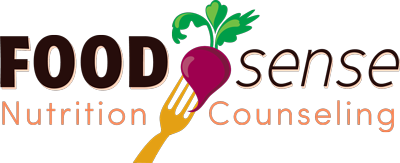Prebiotics & Probiotics: What’s all the Hype About?
By Darieli Sanchez, Dietetic Intern
The human body is filled with good and bad bacteria, and while that might sound alarming, the good bacteria work hard to keep us healthy. Most bacteria in the body live in the colon6, where they help break down food, absorb vitamins, protect against harmful bacteria, and more. By consuming pre- and probiotics, we can increase the ratio of good to bad bacteria and possibly improve our overall health.
Probiotics and Prebiotics
Whether we know what they are or not, many of us have heard the term probiotic. Basically, probiotics are living organisms, mainly bacteria, that we can ingest by way of fermented foods or supplements. By doing so, we’re directly adding beneficial bacteria to the gut.
Prebiotics are a different story, as not many people are familiar with them. Unlike probiotics, they’re not living organisms, they’re what feed them. Prebiotics are indigestible food components such as fiber that provide the necessary fuel for good bacteria to thrive.
 These probiotic foods have been fermented by adding healthy bacteria.
These probiotic foods have been fermented by adding healthy bacteria.
 Probiotic supplements contiain bacteria that have been freeze dried and made into a powder.
Probiotic supplements contiain bacteria that have been freeze dried and made into a powder.
 Prebiotics are found in fiber rich foods such as fruits, vegetables, and whole grains.
Prebiotics are found in fiber rich foods such as fruits, vegetables, and whole grains.
Importance of Gut Health
So, what’s the big deal? Why is it so important to maintain a healthy gut? Believe it or not the good bacteria in the gut affect the entire body, here are just a few ways:
- Weight Control – studies suggest that gut bacteria diversity increases metabolism, which could lead to increased weight loss5.
- Decrease Inflammation and Insulin Resistance – other studies have found that low diversity of gut bacteria may lead to the production of inflammatory chemicals that cause insulin resistance1.
- Improve Brain Function and Mood – although it’s shocking to think that something originating in the gut can affect the brain, scientists are starting to find that gut bacteria diversity may prevent degenerative diseases such as Alzheimer’s2 and improve mood disorders such as depression and anxiety3.
Nourishing the Good Bacteria
The best way to nourish the good bacteria and increase their diversity is to consume foods containing pre- and probiotics. Prebiotic foods include whole grains, beans/legumes, fruits and vegetables while probiotics foods are those that are fermented such as kimchi, yogurt, and kombucha. If you’re considering taking a supplement, it’s always best to talk to your doctor or registered dietitian for more information.
Sources of Probiotics5
- Fermented vegetables (sauerkraut, kimchi, pickles, beets, carrots)
- Fermented fruits (chutneys, jams, green papaya, pickled jackfruit)
- Yogurt, kefir, sour cream, buttermilk (plain, no added sugar, with live and active cultures)
- Kombucha, a fermented tea
- Fermented condiments (relishes, salsas, pickled ginger)
- Water kefir, coconut milk kefir
- Homemade coconut milk or cashew yogurt
- Beet kvass
- Natto, miso, tempeh, and tamari sauce
- Aydin Ö, Nieuwdorp M, Gerdes V. The Gut Microbiome as a Target for the Treatment of Type 2 Diabetes. Current Diabetes Reports. 2018;18(8). doi:10.1007/s11892-018-1020-6.
- Gareau MG. Microbiota-Gut-Brain Axis and Cognitive Function. Advances in Experimental Medicine and Biology Microbial Endocrinology: The Microbiota-Gut-Brain Axis in Health and Disease. 2014:357-371. doi:10.1007/978-1-4939-0897-4_16.
- Liu L, Zhu G. Gut–Brain Axis and Mood Disorder. Frontiers in Psychiatry. 2018;9. doi:10.3389/fpsyt.2018.00223.
- Probiotics and Prebiotics: What You Need to Know. IntegrativeRD. https://integrativerd.org/wp-content/uploads/2018/07/DIFM-Probiotic-and-Prebiotic-Handout-FINAL2018.pdf. Published 2018.
- Renz H. Faculty of 1000 evaluation for Richness of human gut microbiome correlates with metabolic markers. F1000 – Post-publication peer review of the biomedical literature. 2014. doi:10.3410/f.718089027.793489710.
- Sender R, Fuchs S, Milo R. Revised Estimates for the Number of Human and Bacteria Cells in the Body. PLOS Biology. 2016;14(8). doi:10.1371/journal.pbio.1002533.
